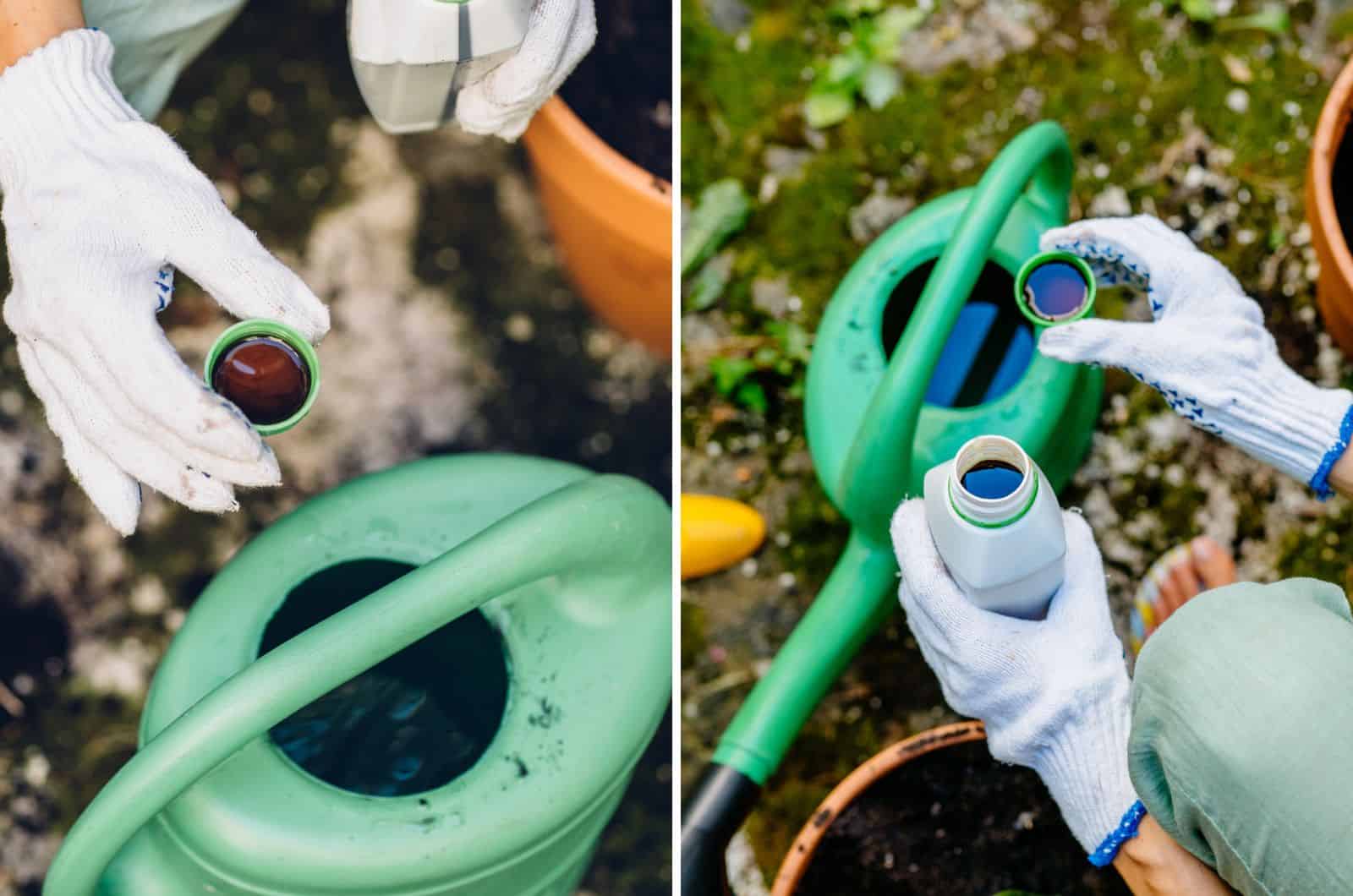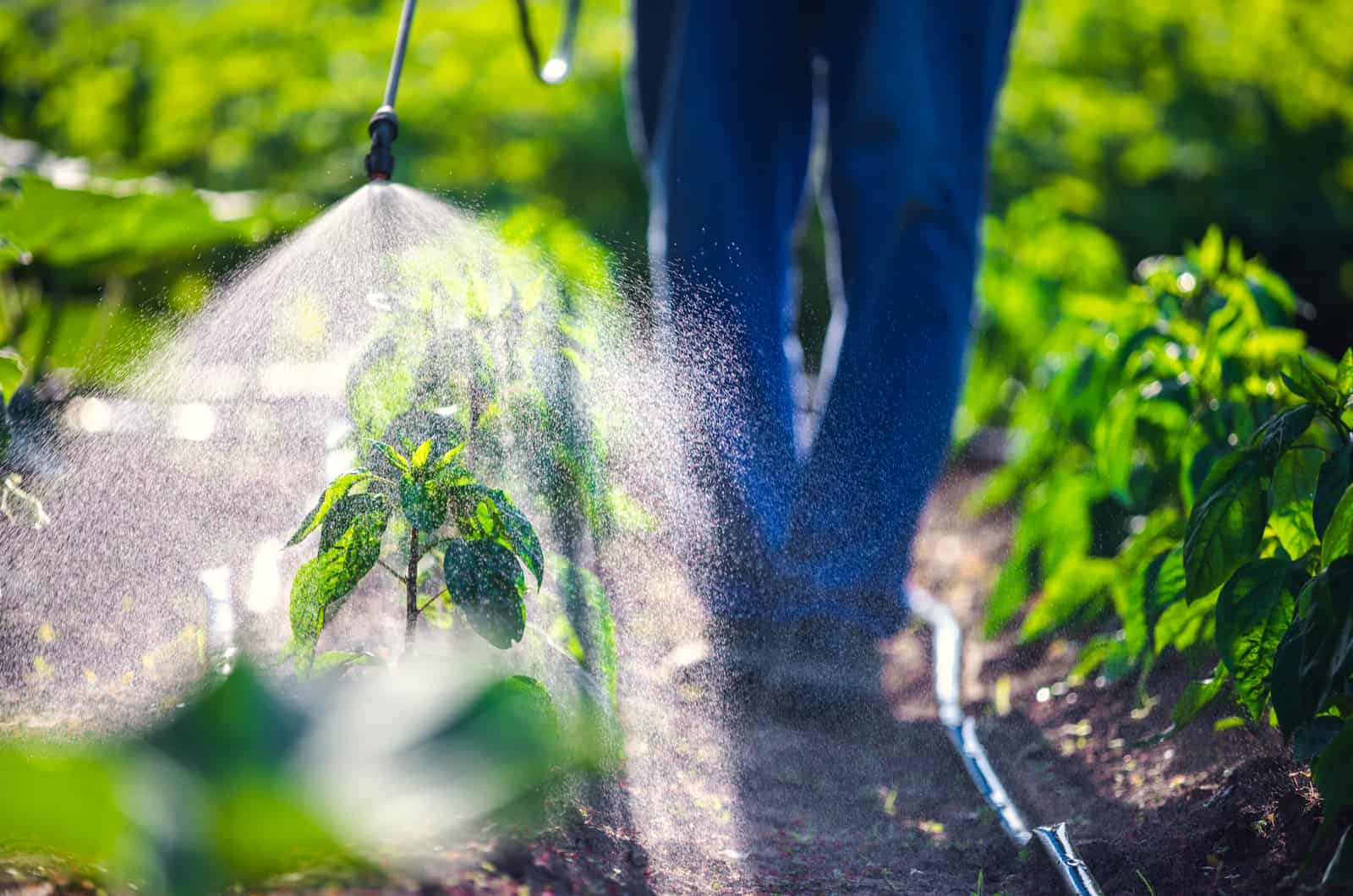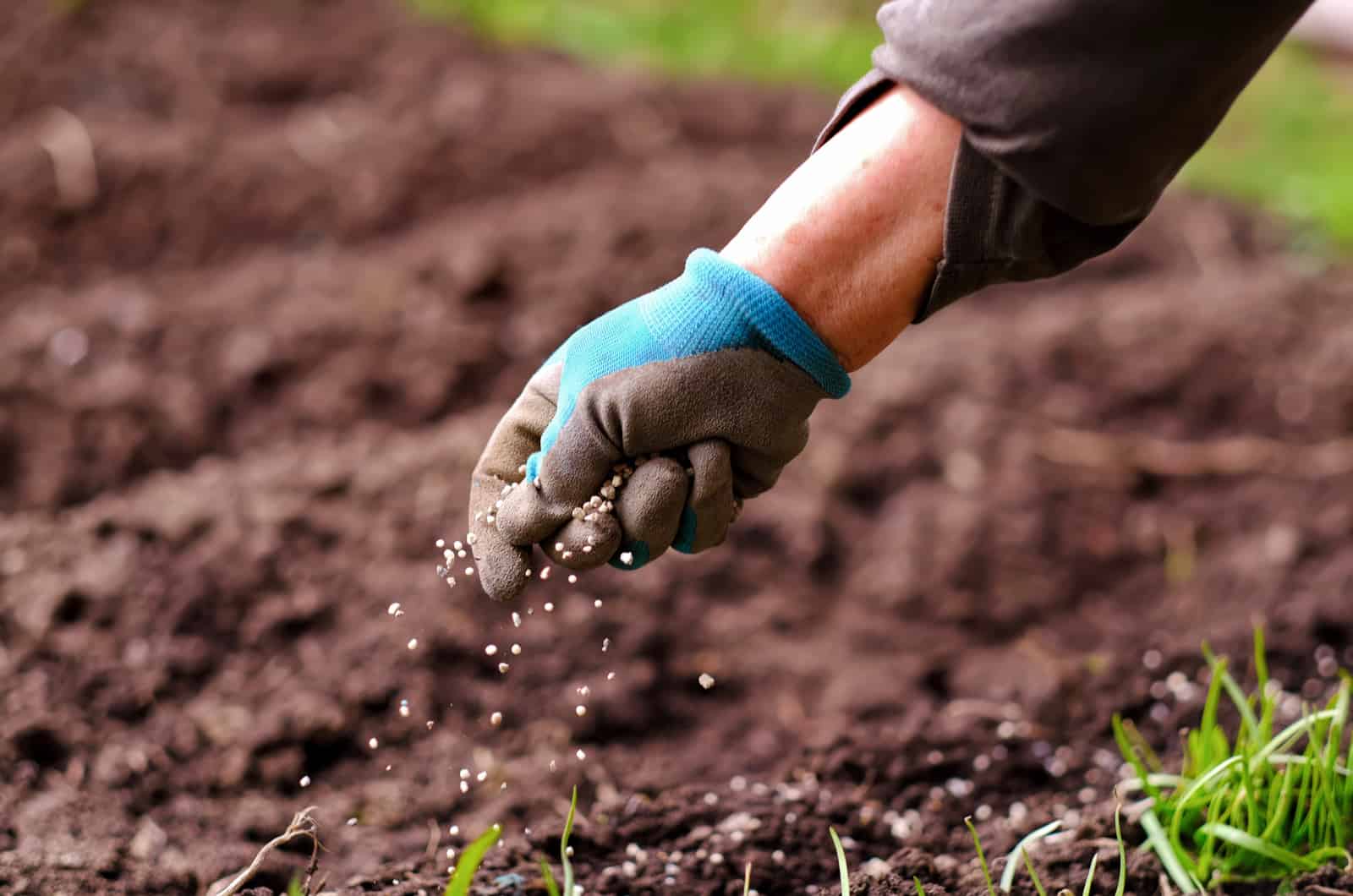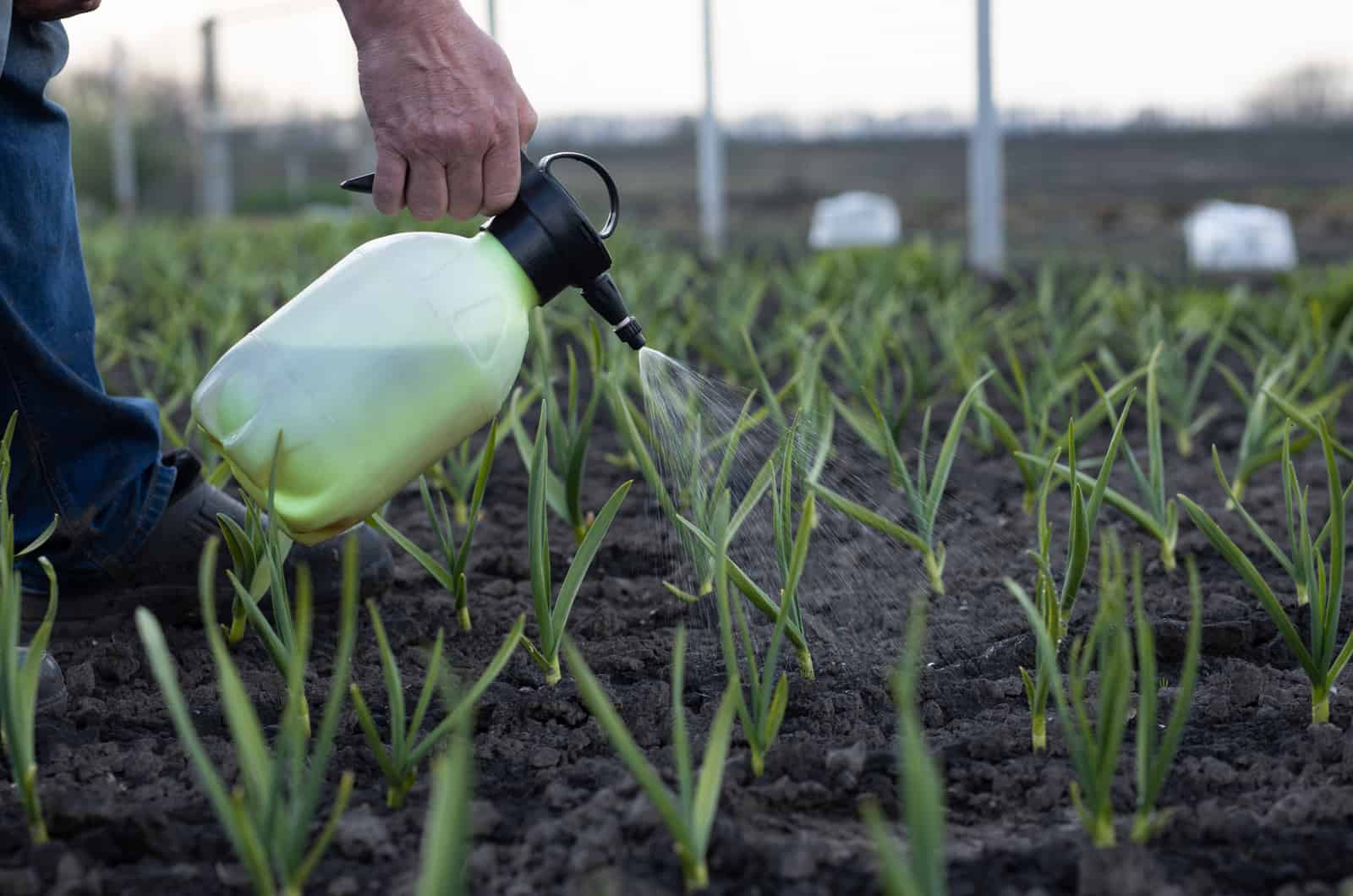We all understand the importance of using fertilizers in our vegetable and flower gardens. They increase the speed of plant growth, keep them healthy, and enable larger yields.
But this substance isn’t the only thing that encourages your plants to develop; your green buddies also produce their own food to sustain themselves!
This leads to the main topic of this article: “What is the difference between plant food vs fertilizer?”.
I can tell you that these things are nothing alike (although they both sustain plant growth), and you’ll learn more about them in the following sections.
Plant Food vs Fertilizer
There are many different things to learn about fertilizers, such as when and how to use triple 19 fertilizer, 12-32-16, 3-1-2, etc., and it’s also important to know about plant foods (or are they the same thing?).
Gardeners, growers, experts, amateurs, and bloggers worldwide use these terms interchangeably because fertilizers “feed” plants, but that’s not actually the case.
Plant food is the product your plants make (sometimes using nutrients from fertilizers), whereas fertilizers refer to substances containing macro and micronutrients that raise soil fertility.
The following sections will discuss the difference between these terms in more detail.
What Is Plant Food?
Plant food is the product of the process of photosynthesis, in which the plant absorbs moisture and essential nutrients from the soil and produces sugar and oxygen using light energy and carbon dioxide.
Plants also require oxygen for proper growth, but they produce ten times more of this gas and won’t deplete the atmosphere of it!
Once the plant has produced oxygen and glucose (sugar), it releases the gas into the atmosphere and uses the sugars. Glucose is necessary for building complex carbohydrates, such as cellulose, starch, proteins, and lipids.
We can find cellulose in plant cell walls, and starch in tubers, grains, and other edible parts.
What Is Plant Fertilizer?
Fertilizers are natural or chemical substances that contain micronutrients, macronutrients, and ballast (a filler that isn’t important to plants). We add this material to the growing medium to make it more fertile.
There are 13 essential minerals that plants need, and fertilizers usually contain the primary three: nitrogen, phosphorus, and potassium. The percentage of these macronutrients is always indicated on the package with the letters NPK (N stands for nitrogen, P for phosphorus, and K for potassium).
There are many fertilizers that contain a balanced ratio between elements (such as 14-14-14) and can be used for a wide range of outdoor and indoor plants. Other varieties are more targeted to specific plants or deficiencies.
For instance, knowing how and when to use 10-20-20 fertilizer, or 20-5-5, or 4-17-0, etc. is essential because these substances target specific issues.
High-nitrogen fertilizers treat nitrogen deficiency, which is usually manifested with yellow leaves. Phosphorus deficiency leads to darkening and purple-red discolorations, while lack of potassium leads to the yellowing of the leaf edges and a scorched appearance.
Organic and chemical fertilizers contain other nutrients, such as calcium, iron, zinc, etc.
Fertilizers can also come in different forms, be they organic or synthetic, etc., and we’ll discuss these factors in the sections below.
Liquid Fertilizers
Liquid fertilizers are commonly used with houseplants because they release nutrients instantly. They are an excellent option if your plant suffers from a nutrient deficiency because they provide an immediate flow of essential minerals.
You should dilute them before use because they are too concentrated and can hurt your plants. You should apply them every 2-6 weeks based on their strength and your plants’ needs, which might be a bother.
Slow-Release Fertilizers
This type of fertilizer can come in granules or spikes, and unlike liquid fertilizers, they take some time before they start working.
They slowly release nutrients into the growing medium, and you won’t see any effect for the first 3-10 weeks, depending on the variety.
But unlike liquid fertilizers, you won’t have to reapply them that often. Most slow-release fertilizers work for 3-6 months, but some can deliver nutrients to the soil for a whole year.
When using granules or spikes, it is important to water your plants beforehand (or immediately after) so that the minerals are available to your plants more quickly.
Slow-release fertilizers are usually used with outdoor plants, such as shrubs, trees, and other perennials (although leaf houseplants can also benefit from slow-release spikes).
Organic Fertilizers
As the name suggests, organic fertilizers are produced in a natural way and don’t contain chemicals that might be harmful and contaminate the soil with heavy metals, underground waters, and even fruits, vegetables, and grains.
These fertilizers contain essential nutrients (nitrogen, phosphorus, and potassium). Still, they can be enriched with micronutrients, such as calcium, iron, zinc, magnesium, manganese, etc., which are essential for the healthy growth of plants.
Natural fertilizers, especially the ones made at home, usually contain low percentages of nutrients that are released more slowly, so they’re not suitable for treating nutrient deficiencies.
Common organic fertilizers include blood meal, bone meal, worm castings, etc., which you can add to potting soil, vegetable gardens, and all other places you grow plants.
They encourage the activity of microorganisms directly involved with nitrogen fixation (converting nitrogen from the air into a form that plants can absorb).
Synthetic Fertilizers
Synthetic fertilizers are generally more concentrated than organic ones and contain a larger percentage of plant nutrients necessary for proper development.
Most varieties of chemical fertilizers work instantly and can be used in treating nutrient deficiencies, but if you don’t dilute them properly, they can cause over-fertilization, which is also detrimental to your plants.
(Excess fertilizer, especially nitrogen, can lower the soil pH, making the medium more acidic.)
Balanced fertilizers can be used for most plants, but it’s always better to do a soil test before adding anything to ensure you give your plants all the nutrients they need.
What Do Plants Need To Produce Food?
Plants use naturally occurring elements, water, minerals, carbon dioxide, and sunlight in photosynthesis.
Moisture, air, and light needs are simple to grasp, but the case with nutrients is somewhat different. There are 13 essential major and trace elements (aside from carbon, hydrogen, and oxygen) that plants need for healthy growth, to create food, etc.
We’ll talk about these elements, as well as other substances needed for photosynthesis, in the following paragraphs.
Water
Moisture is a transport pathway for minerals from the soil and already dissolved in water. It also affects the turgidity of plant cells (they are swollen and no more moisture can enter them), which is why hydrated plants stand upright and underwatered ones wilt.
This medium also replaces electrons that are lost from chlorophyll during photosynthesis. It provides the plant with oxygen and is essential for releasing this gas into the atmosphere.
Minerals
When we want to enrich the soil with organic matter and nutrients, we sometimes need help choosing and distinguishing between compost and fertilizer. Generally speaking, compost improves the soil structure and introduces certain minerals into it, whereas fertilizers simply supplement plants with the nutrients they need.
But what are the necessary nutrients? Essential minerals include nitrogen, phosphorus, potassium, zinc, iron, boron, calcium, magnesium, sulfur, copper, chlorine, manganese, and molybdenum.
All these nutrients are essential for photosynthesis. Some aid in the stability and formation of plant cells, such as boron and calcium. Others activate, synthesize, and play other important roles regarding enzymes (calcium, copper, iron, nitrogen, and potassium).
Certain elements are vital for protein synthesis (calcium, nitrogen, potassium, sulfur, and zinc), while others take part in the production of chlorophyll (iron, magnesium, nitrogen, and sulfur).
Molybdenum, for instance, is crucial for absorbing nitrogen and nitrogen fixation (some microbes require this element). At the same time, manganese plays an important role in oxygen evolution and activates certain metabolic functions.
Elements such as boron, phosphorus, and potassium affect seeding and fruiting; phosphorus aids in rooting and flowering, while potassium improves the quality of grains, fruits, and vegetables. Nitrogen, on the other hand, helps with foliage growth.
Finally, we give our plants zinc sulfate, zinc chelate, or zinc oxide to help them synthesize protein, RNA, and with sugar consumption.
Air
Plants require oxygen and carbon dioxide for photosynthesis and proper function, but they don’t have lungs to breathe with.
Instead, they have stomata – minuscule holes or pores on the bottom sides of their foliage through which they “inhale and exhale” these gases.
At night, plants absorb oxygen and extract carbon dioxide, but during the day the absorption and extraction of these elements are intertwined.
Sunlight
Sunlight isn’t the only source of energy for plants, but it is the most common one. This energy is necessary for photosynthesis, without which this process wouldn’t happen.
The job of chlorophyll is to absorb light, and the plant then uses it to produce sugars and energy it can use from water, carbon dioxide, and nutrients.
How To Choose Fertilizer For Your Plants
You’ve probably wondered what the best fertilizer for new sod is, what nutrients roses need, and if you can fertilize young plants.
Sometimes gardeners decide on compost to introduce organic materials to the growing medium and amend its structure, and sometimes they use fertilizers.
But how can you be sure to choose the right one?
Check The Fertilizer Release Rate
The first thing you need to check is the release rate of the fertilizer. For instance, if your plants need nutrients this instant, you should go for liquid fertilizers as they are usually quick-release and will give your green friends everything they need.
On the other hand, if you plan on giving your trees and shrubs a little boost (especially the young ones), you can try granular and other slow-release fertilizers.
These fertilizers lower the risk of fertilizer burn and will continue releasing a slow and steady flow of nutrients over time.
However, it all depends on the type of plant you have, as some species are heavy feeders that benefit from a constant supply of nutrients that you can only get from slow-release granules or spikes without damaging the soil and the plant’s roots.
Choose The Proper NPK Ratio
The next important thing is choosing the proper NPK ratio. You should always consider your plants’ preferences when deciding on fertilizer.
For instance, flowering plants generally prefer fertilizers with higher percentages of phosphorus, whereas leaf plants require higher nitrogen levels.
However, it all depends on the soil minerals and the fertility of the growing medium. If you use ready-made potting soil or have an extremely rich substrate amended with compost, you might not need to use fertilizers at all.
Therefore, always test the soil before giving your plants more nutrients.
Consider The Eco-Friendliness Of The Product
Finally, synthetic fertilizers aren’t eco-friendly, so if you’re into organic gardening, this might not be the best product for you.
Thankfully, making homemade fertilizer for jade plants (or any other plant) isn’t that difficult, and you can get an organic variant quite quickly.
You can also buy ready-made natural fertilizers, but be aware that they release nutrients more slowly and are generally weaker than synthetic ones.
Here are some tips for making an excellent homemade liquid fertilizer from things you can find in your garden:
Many gardeners use humus and compost to introduce more organic material to the soil, and mulch the plants with pine bark, cedar or cypress mulch, grass clippings, etc., to leak organic matter into the substrate as they decompose.
FAQ
We talked about the main factors concerning the differences between plant food vs fertilizer, but some other things also require our attention.
Plant food and fertilizer are used as synonyms, so it might be difficult to discern between them. The following questions will help to resolve the dilemma.
Is Miracle-Gro plant food a fertilizer?
Miracle-Gro plant food is actually a synthetic fertilizer (not plant food) and is not suitable for organic gardening.
The confusion stems from the use of the word plant food, but in this context, it only refers to the “food,” or rather nutrients, we give to plants to help them grow and photosynthesize.
There are some organic alternatives you can use, and even some Miracle-Gro organic fertilizers available on the market.
Do you need both plant food and fertilizer?
Most plants require fertilizers in addition to the food they produce, but that’s not always necessary. If the growing medium is very fertile and contains a lot of organic matter, your green buddies will need little-to-no fertilizers.
Plants require fertilizers only when there are not enough minerals in the soil for photosynthesis, so test the growing medium to find out whether you should add more nutrients.
Final Thoughts
The main difference between plant food vs fertilizer is that plants produce plant food via photosynthesis, whereas fertilizers are substances we give to plants.
Sometimes we don’t even have to use fertilizers because plants have plenty of minerals in the soil, but if the growing medium is deprived of nutrients, then some fertilizer won’t hurt.
It is important to choose the right NPK ratio and release rate for your plants and also to decide whether you want an organic or synthetic variant. Different types of plants have different needs, so make sure to research their requirements and test the soil beforehand.
Until next time!
Like this post? Share or pin it for later!








